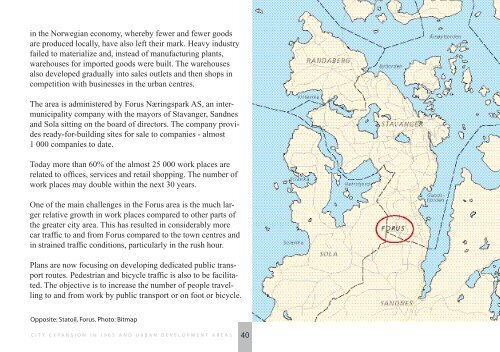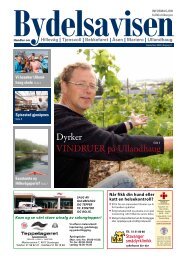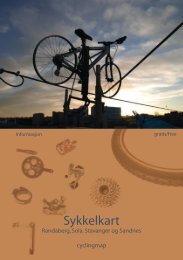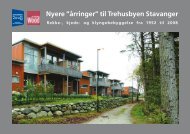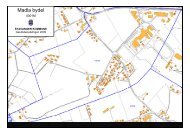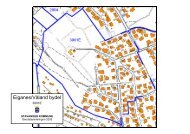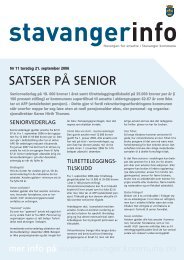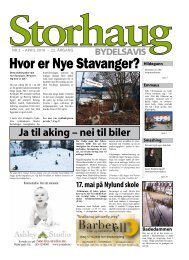Stavanger kommune
Stavanger kommune
Stavanger kommune
Create successful ePaper yourself
Turn your PDF publications into a flip-book with our unique Google optimized e-Paper software.
in the Norwegian economy, whereby fewer and fewer goods<br />
are produced locally, have also left their mark. Heavy industry<br />
failed to materialize and, instead of manufacturing plants,<br />
warehouses for imported goods were built. The warehouses<br />
also developed gradually into sales outlets and then shops in<br />
competition with businesses in the urban centres.<br />
The area is administered by Forus Næringspark AS, an intermunicipality<br />
company with the mayors of <strong>Stavanger</strong>, Sandnes<br />
and Sola sitting on the board of directors. The company provides<br />
ready-for-building sites for sale to companies - almost<br />
1 000 companies to date.<br />
Today more than 60% of the almost 25 000 work places are<br />
related to offices, services and retail shopping. The number of<br />
work places may double within the next 30 years.<br />
One of the main challenges in the Forus area is the much larger<br />
relative growth in work places compared to other parts of<br />
the greater city area. This has resulted in considerably more<br />
car traffic to and from Forus compared to the town centres and<br />
in strained traffic conditions, particularly in the rush hour.<br />
Plans are now focusing on developing dedicated public transport<br />
routes. Pedestrian and bicycle traffic is also to be facilitated.<br />
The objective is to increase the number of people travelling<br />
to and from work by public transport or on foot or bicycle.<br />
Opposite: Statoil, Forus. Photo: Bitmap<br />
CITY EXPANSION IN 1965 AND URBAN DEVELOPMENT AREAS<br />
40


